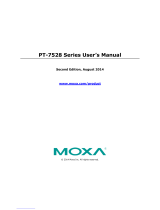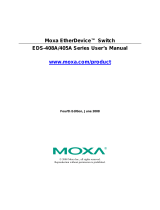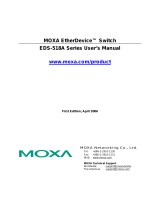
Table of Contents
1. About This Manual ............................................................................................................................. 1-1
Symbols for the Meanings in the Web Interface Configurations ................................................................. 1-2
About Note, Attention, and Warning ...................................................................................................... 1-3
Configuration Reminders ..................................................................................................................... 1-4
A: About Mandatory Parameters .................................................................................................... 1-4
B: Configurations before Enable/Disable ......................................................................................... 1-4
2. Getting Started ................................................................................................................................. 2-1
Log in by Web Interface ...................................................................................................................... 2-2
Connecting to the Switch .............................................................................................................. 2-3
Log in by RS-232 Console .................................................................................................................... 2-4
Log in by Telnet .................................................................................................................................. 2-7
3. Web Interface Configuration ............................................................................................................. 3-1
Function Introduction .......................................................................................................................... 3-2
Device Summary ................................................................................................................................ 3-3
Model Information ....................................................................................................................... 3-4
Panel Status ............................................................................................................................... 3-4
Event Summary (Last 3 Days) ...................................................................................................... 3-6
CPU Utilization History ................................................................................................................. 3-7
Top 5 Interface Error Packet ......................................................................................................... 3-7
Top 5 Interface Utilization ............................................................................................................ 3-8
System .............................................................................................................................................. 3-9
System Management ................................................................................................................... 3-9
Account Management................................................................................................................. 3-18
Network ................................................................................................................................... 3-23
Time ........................................................................................................................................ 3-32
Port ................................................................................................................................................ 3-37
Port Interface ........................................................................................................................... 3-38
Link Aggregation ....................................................................................................................... 3-42
PoE ......................................................................................................................................... 3-45
Layer 2 Switching ............................................................................................................................. 3-53
VLAN ....................................................................................................................................... 3-53
MAC ........................................................................................................................................ 3-62
QoS ......................................................................................................................................... 3-64
Multicast .................................................................................................................................. 3-81
Network Redundancy ........................................................................................................................ 3-87
Layer 2 Redundancy .................................................................................................................. 3-88
Management .................................................................................................................................. 3-107
Network Management .............................................................................................................. 3-107
Security ......................................................................................................................................... 3-113
Device Security ....................................................................................................................... 3-114
Network Security ..................................................................................................................... 3-120
Authentication ........................................................................................................................ 3-134
Login Authentication ................................................................................................................ 3-134
Diagnostics .................................................................................................................................... 3-138
System Status ........................................................................................................................ 3-139
Event Notification .................................................................................................................... 3-144
Diagnosis ............................................................................................................................... 3-151
Maintenance and Tool ..................................................................................................................... 3-161
Standard/Advanced Mode ......................................................................................................... 3-161
Disable Auto Save ................................................................................................................... 3-162
Locator .................................................................................................................................. 3-163
Reboot ................................................................................................................................... 3-164
Reset to Default ...................................................................................................................... 3-165
Log Out of the Switch .............................................................................................................. 3-165
A. Account Privileges List ...................................................................................................................... A-1
Account Privileges List ......................................................................................................................... A-2
B. Event Log Description ....................................................................................................................... B-1
Event Log Description ......................................................................................................................... B-2
C. SNMP MIB File ................................................................................................................................... C-1
Standard MIB Installation Order ........................................................................................................... C-2
MIB Tree ........................................................................................................................................... C-3























